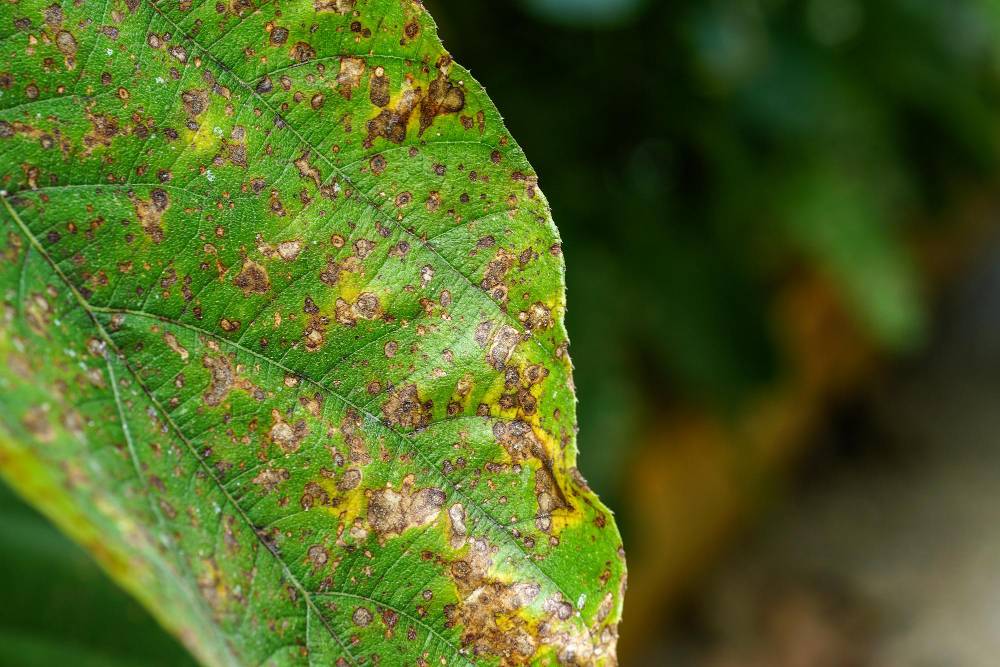
Rust spots on leaves can be alarming for any gardener or plant enthusiast. These spots often show various issues, each requiring a specific resolution approach. At Arbor & Acre, we leverage extensive expertise and knowledge to address and prevent further deterioration. Here are five common reasons why your leaves might have rust spots.
Fungal infections are the most common cause of rust spots on leaves. Rust fungi produce spores that can spread through the air, water, or contaminated tools. These fungi thrive in warm, moist conditions, making plants in humid environments particularly susceptible. The rust spots are usually yellow, orange, or brown and can affect ornamental and edible plants. To combat fungal infections, tree service professionals recommend improving air circulation around the plants, avoiding overhead watering, and applying appropriate fungicides.
Leaves can develop rust-like spots because of inadequate essential nutrients. When these nutrients are deficient, plants cannot perform their physiological functions effectively, leading to rust spots. The best way to address the problem is to schedule routine tests with a tree care company. The results from the test inform the type of fertilizer needed to replenish deficient nutrients.
Pests such as aphids, spider mites, and thrips can also cause leaf rust spots. These insects feed on the plant's sap, damaging the cells and causing discolored spots. The damage caused by these pests can also make plants more susceptible to fungal and bacterial infections, leading to premature tree removal emergencies. Managing pest infestations involves regularly inspecting plants, encouraging natural predators like ladybugs, and using insecticidal soaps or oils to control the pest population. Some signs of infestation often go undetected, hence the need to schedule routine inspections with a trusted tree service expert.
Environmental stressors like extreme temperatures, excessive sunlight, or poor watering practices can lead to rust spots on leaves. A common stress is sunburn, which causes brownish spots on leaves, and water, which weakens plants and makes them prone to spotting. Ensuring that plants are in suitable conditions for their specific needs is crucial. This includes providing adequate shade, maintaining consistent watering schedules, and protecting plants from harsh weather to mitigate severe damage and tree removal projects.
Exposure to certain chemicals, whether through pollution, herbicides, or other garden treatments, can cause rust spots on leaves. These chemicals can burn the foliage or disrupt the plant's physiological processes, leading to spotting. In addition, improper application of herbicides can result in drift, affecting non-target plants. To prevent chemical damage, consult a tree care company to ensure the proper use of garden chemicals. Professionals carefully follow best industry practices and the manufacturer's instructions, maximizing the outcome.
Rust spots on leaves indicate something is amiss with your plant's health. Identifying the root cause is the first step towards effective treatment and prevention. Addressing these issues promptly ensures your plants remain healthy and vibrant, free from unsightly and potentially damaging rust spots. Contact us at Arbor & Acre and schedule regular monitoring and care to maintain the overall health of your garden.
Trees are magnificent, sturdy entities that offer numerous benefits to landscapes and the environment. From curb appeal…
+ Read MoreWinter is upon us, which means it is time to ensure our indoor spaces are cozy and…
+ Read MoreWhen designing your landscape, it’s not just about patios and decks, but also trees and shrubs. If…
+ Read More